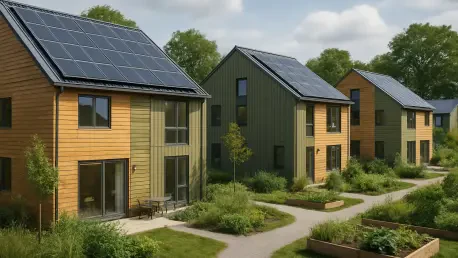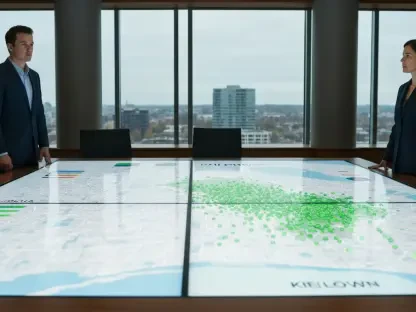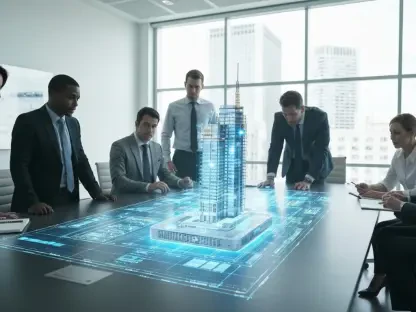I’m thrilled to sit down with Luca Calarailli, a renowned expert in construction, design, and architecture, whose passion for integrating innovative technologies into the industry has reshaped how we think about sustainable housing. Today, we’re diving into a fascinating project in Mastin Moor, Chesterfield, where 18 energy-efficient homes are being built to address the urgent need for affordable housing. Our conversation explores the vision behind this development, the cutting-edge sustainability features, the community benefits, and the broader impact of revitalizing underused land. Luca brings a wealth of insight into how projects like this balance practicality with environmental responsibility, and I can’t wait to hear his perspective.
Can you share the vision behind the Mastin Moor project and what these 18 new homes aim to achieve for the community?
Absolutely. The core goal of this project is to provide affordable housing for families in need within Chesterfield. These homes are being built for folks on the council’s housing register, addressing a critical shortage of accessible, high-quality living spaces. Beyond just putting a roof over people’s heads, the project is about creating a stable, supportive environment where families can thrive, with a strong focus on sustainability and reducing living costs.
How does a company get selected for a project like this, and what qualities do you think made your team the right fit for Chesterfield Borough Council?
It often comes down to a mix of experience, reliability, and alignment with the council’s goals. For us, having a track record of delivering similar projects—like a recent large housing development in the area—gave us an edge. We’ve shown we can handle the complexities of affordable housing while prioritizing energy efficiency and community needs. Trust and a shared vision for sustainable development were key in earning this opportunity.
Could you break down the mix of homes being built and explain who these spaces are designed for?
Sure, we’re constructing a total of 18 homes, split between seven four-bedroom houses and eleven two-bedroom ones. These are spread across two locations in Mastin Moor—Miller Avenue and Edale Road. They’re specifically allocated for families on the council’s housing register, ensuring that those in greatest need get access to safe, modern living spaces tailored to different family sizes.
These homes are touted as having an A-rating for energy efficiency. Can you explain what that means for the families who will live there?
An A-rating is the highest standard for energy performance, meaning these homes are designed to use minimal energy for heating, cooling, and daily operations. For families, this translates to lower utility bills and a more comfortable living environment year-round. It’s about making sure their home isn’t just a place to live, but a place that supports their financial well-being by cutting down on energy waste.
What specific sustainable features are being incorporated into these homes, and how do things like solar panels and air-source heat pumps work?
We’ve integrated several green technologies from the ground up. Solar PV panels on every home capture sunlight to generate electricity, reducing reliance on the grid. Air-source heat pumps, on the other hand, extract heat from the outside air—even in cold weather—to warm the home efficiently. Both features slash energy consumption and carbon emissions, making the homes kinder to the planet and cheaper to run for tenants.
How do these energy-saving measures impact the cost of living for residents, and why is that such a focus for this project?
With the cost of living climbing, especially energy prices, these features are a lifeline. They directly lower monthly bills, which can be a huge relief for families on tight budgets. The focus on affordability isn’t just about the upfront cost of housing but ensuring long-term financial stability for tenants. It’s a priority because no one should have to choose between staying warm and paying other essential bills.
Beyond the homes themselves, what other enhancements are being made to the surrounding area to improve quality of life?
We’re adding private gardens and off-road parking for each home, which gives residents personal space and convenience. The locations are also near public transport routes, making it easier to access local services, schools, or jobs. These elements are crucial for creating a connected, functional community where people feel supported in their daily lives.
I understand there are environmental additions like bat and bird boxes and electric vehicle charging points. Why were these included, and what benefits do they bring?
These features reflect a broader commitment to sustainability and community well-being. Bat and bird boxes support local biodiversity by providing habitats for wildlife, which helps maintain a balanced ecosystem around the development. Electric vehicle charging points encourage greener transportation options, reducing air pollution and preparing for a future where more people drive electric cars. Together, they enhance the area’s environmental health and forward-thinking design.
This project is backed by the East Midlands Combined County Authority’s Brownfield Housing Fund. Can you explain what that fund does and how it’s supporting this development?
The Brownfield Housing Fund is a regional initiative aimed at revitalizing underused or previously developed land for housing. Supported by government funding, it helps unlock stalled projects by covering costs that might otherwise deter development. For Mastin Moor, this funding is critical in transforming neglected sites into vibrant, affordable housing, aligning with larger goals of sustainable growth across the East Midlands.
Why is building on brownfield land so significant, and how does it benefit the region as a whole?
Building on brownfield land—sites that have been used before but are now idle—prevents the unnecessary development of green spaces or farmland. It revitalizes areas that might otherwise remain eyesores, boosts local economies by creating jobs, and increases housing stock without sprawling into untouched landscapes. For the region, it’s a smart way to grow sustainably while preserving natural environments.
Having worked with Chesterfield Borough Council on past projects, how does that experience shape your approach to this development?
Our previous collaboration on a major housing project gave us a deep understanding of the council’s priorities and processes. We’ve built trust and streamlined communication, which helps us anticipate challenges and align our work with their vision for affordable, high-quality homes. That history allows us to hit the ground running and deliver results more efficiently.
What are some of the challenges you anticipate during construction, and how do you plan to address them?
Every project has its hurdles, and here we might face issues like supply chain delays or unexpected site conditions, especially since we’re working on brownfield land. Our approach is to plan meticulously, maintain open lines with suppliers, and have contingency strategies ready. We also keep close coordination with the council to adapt quickly if issues arise, ensuring we stay on track.
Can you give us a sense of the timeline for this project and when families might be able to move into these homes?
While exact timelines depend on various factors like weather and material availability, we’re working diligently to progress through the construction phases. Our aim is to complete the homes as efficiently as possible without compromising quality. We hope to have families moving in within the next couple of years, and we’re committed to keeping that goal in sight as we move forward.
How does this project tie into the larger mission of providing affordable housing, and what role does it play in the council’s broader plans?
This development is a vital piece of the council’s commitment to increasing affordable housing stock for local families. It’s not just about these 18 homes but contributing to a growing network of accessible, sustainable housing options across the borough. It supports their long-term plan to ensure no one is left behind when it comes to having a safe, affordable place to call home.
What’s your forecast for the future of sustainable housing developments in regions like the East Midlands?
I’m optimistic about the direction we’re heading. With growing support from initiatives like the Brownfield Housing Fund and increasing awareness of sustainability, I see more projects embracing energy-efficient designs and community-focused planning. In the East Midlands, I expect we’ll see a wave of innovative housing solutions over the next decade, balancing affordability with environmental responsibility, and setting a standard for how regions can grow responsibly.









